anti-fragile
description: a term coined by Nassim Nicholas Taleb referring to systems that improve in response to stressors, shocks, or failures
17 results
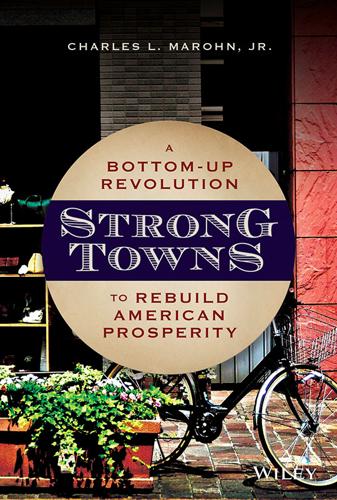
Strong Towns: A Bottom-Up Revolution to Rebuild American Prosperity
by
Charles L. Marohn, Jr.
Published 24 Sep 2019
That’s close, but the full reality is more like how Hemingway described bankruptcy: gradually, then all at once. Traumatic events, large and small, force both adaptation and failure. The combination creates the learned wisdom that is passed on to subsequent generations. Author and philosopher Nassim Taleb has described such systems as “anti-fragile.” Fragile systems degrade when stressed, but anti-fragile systems grow stronger (up to a point). We discover that it’s not wise to put our village too far from the river or we’ll spend too much time and energy hauling water. Later we discover that it’s not wise to put our village too close to the river because a flood will wipe us out.
…
Or to hire help, perhaps purchasing a slave culled from the ranks of a defeated enemy, which was common practice. Again, I’m not describing a utopia; I’m describing a complex system that imperfectly harmonizes many competing priorities simultaneously over time. What is important is that the strategies emerging in such systems are anti-fragile. They limit the risk of catastrophe while maintaining the capacity for improvement, particularly during stress events. These are the strategies that survive the test of time, and when it comes to the Pompeii fast food restaurant, I’m just getting started. The building was located near the edge of town.
…
Chuck and his wife live with their two daughters in their hometown of Brainerd, Minnesota. Index A Accounting, for infrastructure, 70–71 Acre, value per, 135, 138–142 Alexander, Christopher, 8 Altruism, in community living, 6–7, 26 American Society of Civil Engineers (ASCE), 65–67 Amish society, 217 Anderson, Monte, 160–161 Antifragile (Taleb), 193 Anti-fragile systems, 4, 6 Appreciation, for maintenance staff, 180–183 Arnade, Chris, 214–215 ASCE (American Society of Civil Engineers), 65–67 Assessment process, 77 Automobile reliance: development based on, 27–30 and modern city development, 111–112 productivity and, 140 B Barbell investment approach, 148–150, 150f Better Block Foundation, 159 Bezos, Jeff, 102 Bias, confirmation, 69, 74, 183–186 Bicycles, 112 Big box stores: alternative uses of sites of, 169 productivity for, 136–137 Big project mentality, 184–186 The Big Sort (Bishop), 207–208 “Bipartisan Placemaking: Reaching Conservatives” panel, 210 Bishop, Bill, 207–208 The Black Swan (Taleb), 59, 120 Blighted areas, productivity of, 131–134, 140 Boise State University, 126 Boys & Girls Club of Santa Ana, x Brainerd, Minnesota, 16f, 18f development of infrastructure in, 30–31 experimental development pattern in, 125–126 founding and development of, 16–17 productivity at downtown vs. edge of town, 134–138 traditional vs. modern development in, 131–134 Bretton Woods agreement, 90 Brooklyn, New York, 213–214 Brown, Aaron, 211 Brown, Michael, 114 Budgeting, by cities, 50–57 Building code deficiencies, addressing, 194 Buildings, complex vs. complicated, 20–23 Bureaucracy, 172 Burnham, Daniel, 122 Bush, George W., 209 C California, government decision making in, 197–198 Capital investments, return on, 171–172 Carbon-reduction benefits, 74 Carlson, Curtis, 121 “Carlson's Law,” 121 Cash flow: and debt, 98, 187–192, 188f–190f over life cycle of development project, 52–57, 55f, 56f CBO (Congressional Budget Office), 78–80 Centralization, 198 Chaos, order vs., 121–122 Chicken problem, 195 Cities, 37–62 abandonment of, 109–110 accounting for infrastructure by, 70–71 budgeting and growth in, 50–57 contracting of, 154 Detroit, Michigan, 60–62 development of Pompeii, Italy, 5–10 economic stability of modern, 104–106 engineer's view of, 11 experimental development pattern in, 126–127 filling gaps in, 160–163 and illusion of wealth, 57–60 incremental growth in founding of, 15–20 as infinite game, 38–41 and infrastructure, 44–50 maintenance required for infrastructure in, 115 modern development of, 12 revenues and expenses, 41–44 traditional vs. modern development of, 1–3 Cities and the Wealth of a Nation (Jacobs), 101–102 City Council of Santa Ana, ix, x City engineer, 177t City halls, 43–44 City planner, 177t Class: and neighborhoods, 21–22 and re-urbanization, 116 Clinton, Bill, 209 Clinton, Hillary, 63 Cognitive Architecture (Sussman and Hollander), 8 Cognitive discounting, 65 Collaboration, between government officials and citizens, 195–197 Commers, Jon, 45 Common infrastructure, 130 Community living, 199–218 differing opinions in, 206–212 and extended family, 200–201 as infinite game, 39–40 meaning in, 212–218 in neighborhoods, 202–203 in Pompeii, Italy, 6–7 walking in, 203–206 Complex, adaptive systems: human habitats as, 3–4 and incremental growth, 168 incremental growth of, 15–16, 18–19 rational decision making with, 120–123 Complex buildings, 20–23 Complicated buildings, 20–23 Complicated systems, 11–14 Confirmation bias, 69, 74, 183–186 Conflicts, dealing with, 206–212 Congress for the New Urbanism, 210 Congressional Budget Office (CBO), 78–80 Constraints: and economic stability, 93–96 and gold standard, 90 growth as, 100 prudent, for investments, 164–168 removal of, in modern world, 59–60, 96 Construction costs, 136–137 Consumption, 215–216 Costa Rica, 126–127 The Crash Course (Martenson), 108 Critical systems, 182–183 Cross-generational civic collaboration, 187 D Dallas, Texas, 159 Darwin, Charles, 8 The Death and Life of Great American Cities (Jacobs), 8 Debt: and cash flow, 98 for federal government, 186 for government, 96–100 for local government, 113–114 for place-oriented government, 186–192 for projects with quality-of-life benefits, 187 for state government, 113–114 Debt to income ratio, 97 Decision making: rational, see Rational decision making subsidiarity in, 195–198 Default, on municipal debt, 191 Deneen, Patrick, 211 Density, as urban planning metric, 128–129 Depression economics, 86–89 Detroit, Michigan, 60–62 land values in, 24 renewal of urban, 117–119 Development projects: cash flow over life cycle of, 52–57, 53f, 55f, 56f decisions about failing, 115–120 Diamond, Jared, 58, 59, 84 Dig Deep, 211 Donjek, 45 Downtown, productivity of, 134–140, 139t, 143–144 Duany, Andres, 195 Duggan, Mike, 119 Duncanville, Texas, 160 E Economic development department, 178t Economics: and benefits of infrastructure spending, 72–73 in depressions, 86–89 Economic stability, 83–106 and auto-oriented development, 29–30 and constraints, 93–96 creating, 85–86 and depression economics, 86–89 and focus on growth, 100–102 following World War II, 89–91 and government debt, 96–100 growth vs. wealth, 102–104 of modern cities, 104–106 and post-war boom, 91–93 risk management strategies for, 83–85 Edges, 7–8 Edges of city: center vs., 28 city infrastructure necessary for, 115 productivity of, 134–138, 143–144 Efficiency, designing for, 174–176 Ehrenhalt, Alan, 116 Empire State Building (New York, New York), 129 Employment, in productive places, 133 England, 83 Expenses, and revenues, 41–44 Extended family, 200–201 F Failure, slow, 110–115 Failure to Act (ASCE report), 65–67 Family, extended, 200–201 Fannie Mae, 92 Farmers, risk management strategies of, 83–84 Federal Funds Rate, 97 Federal government: debt for, 186 impact of infrastructure on, 79 Federal Housing Administration (FHA), 89, 92 Federal Reserve, 99 Feedback, in local governments, 173–174 Ferguson, Missouri, 93, 114 FHA (Federal Housing Administration), 89 Financial status, local government's understanding of, 190–191 Finished states, neighborhoods built to, 21–23 “First ring” suburbs, 94 Form-based codes, 193–194 Fragile systems, 4 Franchises, productivity of, 133–134 Freddie Mac, 92 Future, predicting needs for, 19–20, 120–121 G Gaps, in cities, 160–163 Garcia, Anthony, 158 Gas tax, 75 Gawron, Stephen, 161 Gehl, Jan, 8 “General Theory of Walkability,” 206 Gentrification, of urban neighborhoods, 117 Goals, of individuals vs. communities, 40–41 Goland, Carol, 84 Gold reserves, 94 Gold standard, as basis for trade, 90 Government debt, 96–100 Government policies, prioritizing traffic, 29 Great Depression, 87–89, 191 The Great Inversion and the Future of the American City (Ehrenhalt), 116 Great Society, 93 Growth: economic stability and focus on, 100–102 in municipalities, 50–57 as objective of local governments, 176 wealth vs., 102–104 H Haidt, Jonathan, 208, 209, 215 Hardship, response to, 172–174 Hasidic Judaism, 213–214, 217 Hemingway, Ernest, 4 Henwood, Doug, 79 Hierarchies, in local government, 174–176 Highland neighborhood (Shreveport, Louisiana), 220 Highland Park (Shreveport, Louisiana), 220 High land values, 27–30 High Point, North Carolina, 161 Highway bypass corridor, 134–138 Hollander, Justin B., 8, 9 Homeless shelters, xi Homes, changing, 20 Hoover, Herbert, 87 Horizontal expansion, in California, 197 Housing: in California, 197–198 post-war changes in, 92 preference for single-family, 144–145 Housing authority, 178t How to Live in a World We Don't Understand (Taleb), 59 Human habitats, 1–14 as complex, adaptive systems, 3–4 in North America, 1–3 spooky wisdom in, 5–10 as systems that are complicated, 11–14 Hunter-gatherer existence, 58 Hurricane Katrina, 102–103 Hurricane Rita, 102–103 I Illusion of Wealth: and constant maintenance, 152 human response to, 57–60 Illusion of Wealth phase of development, 143 Improvement to Land (I/L) Ratio, 25, 25f, 117 Improvement value, 23–25, 25f Incentives, to fix problems, 113 Income taxes, 72 Incremental changes, implementing, 122–123, 156–157 Incremental growth, 15–35 and complex, adaptive systems, 168 complex vs. complicated buildings in, 20–23 constraints on, 164 and founding of cities, 15–20 good and bad development in, 34–35 and high land values, 27–30 and neighborhood renewal, 23–27 private and public investment in, 30–34 in traditional habitat development, 2 Infill projects, 160 Infrastructure, 63–81 accounting for, 70–71 and American Society of Civil Engineers, 65–67 calculating returns on investment for, 67–69 Congressional Budget Office on, 78–80 development of, 30–34 as investment, 41–42 in modern development, 32 and municipalities, 44–50 perception of need for more, 63–65 ratio of private to public investment in, 129–130 real return on investment, 74–78 secondary effects of, 72–74 Infrastructure Cult: development of, 65–67 paper returns calculated by, 69 Insolvency, 187–192 Interstate highway system, 92 Investment(s), 147–170 barbell investment approach, 148–150 capital, 171–172 conventional vs. strong towns thinking about, 185–186, 186t in filling gaps in cities, 160–163 impact of regulations on, 194 infrastructure as, 41–42 little bets, 150–160 low-risk investments with steady returns, 150–155 prudent constraints for, 164–168 public and private, 30–34, 31f, 32f returns on, see Return on investment in Suburban Retrofit, 168–169 Italy, walking in, 203–204 J Jacobs, Jane, 8, 101–102 Japan, 76 Jimmy's Pizza, 161–162 Job creation, 49, 72–73 Johnson, Neil, 12, 13 Junger, Sebastian, 216–217 K Keynes, John Maynard, 88 Keynesian economic policies, 88 Krugman, Paul, 63, 78 Kunstler, James, 110–111 L Lafayette, Louisiana, 101, 141–144, 151 Landau, Moshe, 213–214, 217 Land value: in declining suburbs, 113 and interstate highway project, 92 and neighborhood renewal, 23–25, 25f in neighborhoods with different types of properties, 165–167, 165f, 166f and suburban development, 27–30 Learning, from previous local investments, 187 Legacy programs, 173 Lifestyle choices, 202, 205–206 “Lifestyle enclaves,” 208 Little bets, 16–18, 150–160 Local economy: as basis for national economy, 101–102 national vs., 103 Local government: changes in, to maintain economic stability, 105–106 debt taken on by, 113–114 funded by state government, 95 impact of infrastructure on, 79–80 profit run by, 37–38, 147 relationship of state and, 198 Long declines, 110–115 “Long emergency,” 110–111 Long Recession of the 1870s, 77 Los Angeles, California, xi Lovable places, 10 Low-risk investments, with steady returns, 150–155 Lydon, Mike, 158 M Maintenance: ability to keep up with, 109 cash-flow debt to cover, 188–192, 188f–190f of development projects, 52–57 of infrastructure, 46–49 need for constant, 151–154 in place-oriented government, 180–183 required for single-family homes, 112 Maintenance department, 179t Manhattan, New York, 24 Martenson, Chris, 108 Meaning, life of, 212–218 Middle class, 92, 93, 144–145 Milan, Italy, 164 Mills Fleet Farm, 134–137 Minicozzi, Joseph, 138–140, 161 “Minnesota Miracle,” 95 Mixed-use neighborhoods, 163, 169 Modern city development: as high-risk investments, 149 as lead by pubic investment, 34–35 productive places in, 131–134 Modern Monetary Theory, 99 Mortgages, during Great Depression, 88–89 Mouzon, Steve, 10, 113 Muskegon, Michigan, 161 N National Association of Home Builders, 136 National economy, local vs., 103 Natural disasters, 102–103 Neighborhoods: abandonment of, 109–110 built to finished states, 21–23 changing in post-war era, 92–93 community living in, 202–203 decline of, 113 gentrification of urban, 117 mixed-use, 163, 169 renewal of, and incremental growth, 23–27 responses to improvements in, 158 structured around religions, 214 in transition sections of Detroit, 118 Neighbors, being involved with, 202–203 New Deal economics, 87–88 New Orleans, Louisiana, 102, 182 Nixon, Richard, 94 Noncritical systems, 182 O Oak Cliff neighborhood (Dallas, Texas), 159 Obama, Barack, 63 Obesity, among Pacific Islanders, 58–59 Options Real Estate, 160 Orange County, California, xi–xii Order, chaos vs., 121–122 The Original Green (Mouzon), 10, 113 Oroville dam (California), 182 Oswego, New York, 152 Oswego Renaissance Association, 152 P Pacific Islanders, 58–59, 183–185 Paper returns on investment, 67–69 Paradox of Avarice, 104 Paradox of Thrift, 88, 104 Pareidolia, 8–9, 9f Parks department, 178t Party analogy, 34–35 A Pattern Language (Alexander), 8 Pension funds, 56–57, 70, 98 Pequot Lakes, Minnesota, 44–46 Perception, of need for more infrastructure, 63–65 Personal preferences, 144–145 Peru, 84 Place-oriented government, 171–198 and confirmation bias, 183–186 designed for efficiency, 174–176 focus on broad wealth creation by, 176–180 maintenance as priority for, 180–183 and regulations, 192–194 response to hardship by, 172–174 subsidiarity in, 195–198 understanding of debt by, 186–192 Political differences, 207 Pompeii, Italy, 5–10 Post-war boom: and economic stability, 91–93 modern city development established in, 12 Power, subsidiarity principle and, 196–198 Prayer of Saint Francis, 218 Prioritization, of maintenance, 180–183 Private development, 40 Private investment: private to public investment ratio, 129–130 public and, 30–34, 31f, 32f Private sector (businesses): response to economic hardship in, 172–173 small, see Small businesses Problem solving, 13–14 Productive places, 125–146 downtown vs. edge of town, 134–138 in past, 125–127 and personal preferences, 144–145 productivity calculations for, 128–130 return on investment, 141–144 traditional vs. modern development in, 131–134 value per acre, 138–141 Productivity, calculations of, 128–130 Project teams, 179–180 Property taxes, 49 Property value, 23–25, 25f Public health, and walking neighborhoods, 205 Public investment: private and, 30–34, 31f, 32f private to public investment ratio, 129–130 returns required for, 147 Public safety department, 179t Q Quality-of-life benefits, 187 Quantitative Easing, 99 R Railroad companies, 77 Rational decision making, 107–123 about failing development systems, 115–120 about long declines, 110–115 within complex, adaptive system, 120–123 and lack of single solution, 107–110 Real return on investment, 74–78 Redevelopment, financial productivity after, 131–134, 139–140, 139t Redundant systems, 182 ReForm Shreveport, 219, 220 Regulations: from place-oriented government, 192–194 and subsidiarity principle, 195–198 Repealing regulations, 192–193 Republican Party, 209 Request for proposal (RFP), 50 Residents, learning concerns of, 156–157 Resources: assumption of abundance of, 12–14 wasted, in modern development, 19 Retreats, strategic, 108–109 Return on investment, 141–144 calculating, for infrastructure, 67–69 for capital projects, 171–172 in cities, 44 and debt taken on by local governments, 187 low-risk investments with steady, 150–155 paper, 67–69 real, 74–78 social, 78–79 Revenues, and expenses, 41–44 RFP (request for proposal), 50 The Righteous Mind (Haidt), 208 Risk management strategies, 83–85 Roaring Twenties, 87 Roberts, Jason, 159 Roosevelt, Franklin, 87, 88 Rotary International, 203 S St.

Giving the Devil His Due: Reflections of a Scientific Humanist
by
Michael Shermer
Published 8 Apr 2020
A feminist blogger named Melody Hensley, for example, claims that years of online stalking and social-media trolls gave her PTSD on par with that of combat soldiers, disabling her from being able to work. Not surprisingly, war vets were not sympathetic.22 (3) From Anti-Fragile to Fragile Children. One response to the 1970s and 1980s crime wave was a shift toward “helicopter parenting” in which children were no longer allowed to be, well, children. The social psychologist Jonathan Haidt explains why through the concept of anti-fragility: Bone is anti-fragile. If you treat it gently, it will get brittle and break. Bone actually needs to get banged around to toughen up. And so do children. I’m not saying they need to be spanked or beaten, but they need to have a lot of unsupervised time, to get in over their heads and get themselves out.
…
I’m not saying they need to be spanked or beaten, but they need to have a lot of unsupervised time, to get in over their heads and get themselves out. And that greatly decreased in the 1980s. Anxiety, fragility and psychological weakness have skyrocketed in the last 15–20 years.23 Those kids are today’s college students, and as a consequence they have brittle bones and thin skins. An example of an anti-fragile person with strong bones and thick skin is the model Isabelle Boemeke, who tweeted what she does when verbally harassed on the streets by ogling men (see Figure 6.2). If your Spanish is rusty, a biblical metonymy may be found in the command to “go forth and multiply” (with your mother). (4) Puritanical Purging.
…
December 4. http://bit.ly/2CYLGk0 Index A Few Good Men (film), 245–246 A Man for All Seasons (Bolt), 8–9, 22, 41 academic censorship, 19–27 Adams, John, 84, 137, 227 Age of Reason, 270 Ali, Ayaan Hirsi, 70, 71 Alkon, Amy, 308 Allen, Woody, 108 alternative archaeology burden of proof, 321–324 cherry-picking data, 316–318 confirmation bias, 316–318 conjecture and refutation, 321–324 danger of reading the past from the present, 324–326 disparagement of mainstream archaeology, 319–321 falsifiability, 321–324 lack of convincing evidence, 314–316 patternicity, 318–319 romancing the past, 326–327 variety of alternative theories, 314–316 Alternative Facts, 8 altruism, 106 Alvy’s error meaning of life and, 108–109 American Revolution, 72 Amis, Martin, 279 Anonymous (group), 93, 99–101 anthropic principle, 112, 120 anti-fragility, 74 anti-Semitism, 30–31Holocaust denial, 38–43 anti-something movements likelihood of failure, 90 Apple, 206 Applebaum, Paul, 166, 172 archaeology. See alternative archaeology Archetype Theory of Truth (Peterson), 304–307 Arden, Jacinda, 29 Arendt, Hannah, 34 Areopagitica (Milton), 3–4 Aristotle, 231 Asimov’s Axiom, 117–118 atheism anti-something movements are doomed to fail, 90 challenging religious beliefs, 86–92 freedom to disbelieve, 86–92 meaning of life and, 103–108 morality and, 87–88 New Atheist movement, 289 power of positive assertions, 90 rational consciousness raising, 91 societal health and, 88 Australia effects of gun law reform, 174–175 Austria effects of gun control, 187–190 authority bias, 24 availability bias, 24 Aveling, Edward, 90, 288 Baby Boomer generation, 65 Bachmann, Michele, 81, 82–83 Baer, Elizabeth, 1–2 Bailey, Ronald, 289 baraminology, 58 Barash, David, 287 Barlow, Connie, 289 Barna, George, 87–88 Baron-Cohen, Simon, 165 Barrow, John, 120 Bastiat, Frédéric, 214–215 Baumeister, Roy, 34–35 Bazile, Leon M., Judge, 72 Beale, Howard, 88 Beckner, Stephen, 300 belief pluralism case for, 81–85 beliefs cognitive biases and, 23–24 believability bias, 24 Bentham, Jeremy, 139 Bentley, Alex, 86 Berg, Alan, 30 Berger, Victor, 2 Berkman, Alexander, 2 Berlin Wall, 217 Berra, Yogi, 289 Bible, 224–225, 317 Big Bang, 121 Big Five personality traits, 260–261 Big Questions Online (BQO) program, 103 bigotry historical influences, 30–31 Bill of Rights, 143 bio-altruism, 106 Biography Bias, 262 birth order personality and, 261–262 Black Lives Matter movement, 132 Black Swan events, 29, 162 Blackburn, Simon, 287 Bligh, William, 156–159 Bod, Rens, 225–226 Boemeke, Isabelle, 74 Boko Haram, 34 Bolt, Robert, 8, 22 boom-and-bust cycles, 121 Boone, Richard, 298 Boonin, David, 44 bottom-up self-organization, 203–205, 215–217 Bouchard, Thomas, 289 Boudreaux, Donald, 212–213 Brandeis, Louis, Justice, 41, 44 brane universes, 123 Breivik, Anders Behring, 29, 165–166 Brexit, 153 Brin, David, 153 Brin, Sergey, 260 Bronowski, Jacob, 299 Brooks, Arthur C., 89, 212 Browne, Janet, 288 Browning, Robert, 160 Bruruma, Ian, 282 Bryan, William Jennings, 48 Buckholtz, Joshua W., 168 Buffett, Warren, 211 Burke, Edmund, 153 Bush, George W., 138 Calhoun, John C., 14 Callahan, Tim, 115–116 Calvin, William, 289 Camus, Renaud, 30 Carlson, Randall, 314 Carroll, Sean, 117, 118, 121 Cassidy, John, 212–213 categorical imperative (Kant), 240 censorship, 1–9arguments against, 19–27 college students’ responses to controversial subjects, 64–78 hate speech, 28–37 Holocaust denial, 38–43 Principle of Interchangeable Perspectives, 78 Ten Commandments of free speech and thought, 7–8 trigger warnings and, 66–67 Center for Inquiry (CFI), 269, 271 Central American Free Trade Agreement (CAFTA), 250–251 Change.org, 33–34 Christakis, Nicholas, 154–156 Christchurch, New Zealand, massacre responses to, 28–37 Christian, Fletcher, 156–159 Christian values v. the US Constitution, 81–85 Churchill, Ward, 41 civilization free trade institutions, 249–251 how to get to Civilization,1.0, 251–253 influence of political tribalism, 243–246 pre-financial crisis world, 243 Types of civilization, 246–247 Clark, Kenneth, 299 classical liberalism, 136case for, 138–144 Clinton, Bill, 83, 253 Coase, Ronald, 201 Cockell, Charles S., 150–152 Coddington, Jonathan, 59 cognitive biases, 23–24 cognitive dissonance, 95–96 Colavito, Jason, 321 collective action problem, 198–201 college faculty political bias among, 75–76 college students consequences of left-leaning teaching bias, 75–76 drive to censor controversial subjects, 64–78 Free Speech Movement of the late 1960s, 64–65 Generation Z and how they handle challenges, 64–65 microaggressions, 68–70 provision of safe spaces for, 67–68 trigger warnings, 66–67 views on freedom of speech, 64–78 colleges avoidance of controversial or sensitive subjects, 25 causes of current campus unrest, 71–76 disinvitation of controversial speakers, 25 lack of viewpoint diversity, 75–76 speaker disinvitations, 70–71 ways to increase viewpoint diversity, 76–78 Collins, Francis, 60 Collins, Jim, 263–264 Columbine murders, 169 Committee for the Scientific Investigation of Claims of the Paranormal (CSICOP), 271 communication microaggressions, 68–70 competitive victimhood, 132 Conan Doyle, Arthur, 280, 283 confirmation bias, 24, 316–318 conjecture and refutation, 8, 23 conscription as slavery, 1–2 conservatism, 134–136 conservatives Just World Theory, 255 Strict Father metaphor for the nation as a family, 193–197 consistency bias, 24 conspiracy theories Intelligent Design advocates, 55–63 contingency influence on how lives turn out, 258–264 Copernican principle, 120 Core Theory of forces and particles, 118 correspondence theory of truth, 305, 306 Cosmides, Leda, 238 Costly Signaling Theory, 208 Coulter, Ann, 13 Cowan, David, 263 Craig, William Lane, 104, 108–109 Craig’s Categorical Error, 109 Creation Science, 50 creationism freedom of speech issue, 44–54 level of support in America, 46 question of equal coverage in science teaching, 50–54 variety of creationist theories, 50–52 view of Richard Dawkins, 293–294 why people do not support evolution, 47–50 Cremo, Michael, 316 Crichton, Michael, 123 Cruise, Tom, 100 cry bullies, 77 cults Scientology as a cult, 96–98 culture of honor, 73 culture of victimhood, 73 Darley, John, 317 Darrow, Clarence, 52–53 Darwin, Charles, 280connection with Adam Smith, 203–205 development of the theory of evolution, 44–46 impact of the Darwinian revolution, 44–47 on science and religion, 90 On the Origin of Species, 104–105 problem of the peacock’s tail, 200 skepticism, 270, 287–288 Darwin Awards, 207 Darwin economy, 199–201 Darwinian literary studies, 306 Darwinian universes, 122 Darwinism misinterpretation for ideological reasons, 60–61 neo-Darwinism, 62 scientific questioning, 61–63 Dawkins, Richard, 55, 61, 87, 89, 104at the Humanity 3000 event (2001), 289–291 influence of, 287–289 on creationism, 293–294 on pseudoscience, 292–294 on religion, 287–289, 293–295 scientific skepticism, 291–295 sense of spirituality, 295–296 Day-Age Creationists, 51 de Tocqueville, Alexis, 139 Debs, Eugene V., 2 Declaration of Independence, 27, 72 Defant, Marc, 314 Del Ray, Lester, 95 delegative democracy, 149 Dembski, William, 49, 55, 63, 280 democracy delegative democracy, 149 direct democracy, 149–150, 153 freedom of speech and, 26 impact of cyber-technology, 153 representational democracy, 149 Dennett, Daniel, 87, 287 Denying History (Shermer and Grobman), 38, 42, 78 Descartes, René, 230 Deutsch, David, 287 devil what he is due, 8–9 who he is, 8–9 Diamond, Jared, 147–148, 208–209, 228, 314, 321, 322 Diderot, Denis, 270 direct democracy, 149–150, 153 Dirmeyer, Jennifer, 215 District of Columbia v.

The Great Mental Models: General Thinking Concepts
by
Shane Parrish
Published 22 Nov 2019
The important thing is not to sit down and imagine every possible scenario in the tail (by definition, it is impossible) but to deal with fat-tailed domains in the correct way: by positioning ourselves to survive or even benefit from the wildly unpredictable future, by being the only ones thinking correctly and planning for a world we don’t fully understand. — Sidebar: Anti-fragility Asymmetries: Finally, you need to think about something we might call “metaprobability”—the probability that your probability estimates themselves are any good. This massively misunderstood concept has to do with asymmetries. If you look at nicely polished stock pitches made by professional investors, nearly every time an idea is presented, the investor looks their audience in the eye and states they think they’re going to achieve a rate of return of 20% to 40% per annum, if not higher.
…
Something we thought could only happen every 1,000 years might be likely to happen in any given year! This is using false prior information and results in us underestimating the probability of the future distribution being different. _ Taleb, Nassim. The Black Swan: The Impact of the Highly Improbable, 2nd edition. New York: Random House, 2010. Anti-fragility How do we benefit from the uncertainty of a world we don’t understand, one dominated by “fat tails”? The answer to this was provided by Nassim Taleb in a book curiously titled Antifragile. Here is the core of the idea. We can think about three categories of objects: Ones that are harmed by volatility and unpredictability, ones that are neutral to volatility and unpredictability, and finally, ones that benefit from it.
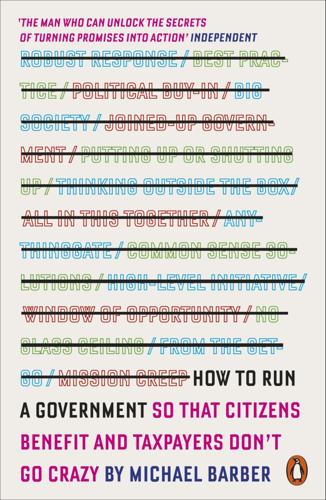
How to Run a Government: So That Citizens Benefit and Taxpayers Don't Go Crazy
by
Michael Barber
Published 12 Mar 2015
Even so, Nassim Nicholas Taleb’s brilliant book makes numerous telling points, one of which happily introduces this section. In seeking to reduce its risk, he says, ‘Government too often transfers risk from the collective to the unfit.’7 It is a devastating statement, all the more so for being recognizably true. The implication is that to ensure anti-fragility in a system it is necessary to ensure it is ‘fit’ or, to put it more technically, has in place the capacity to deliver. In chapter 2, the concept of the ‘guiding coalition’ was introduced – the small group of seven to ten people in key positions who share a deep understanding of the goal and how it is to be achieved.
…
Much better to spread three days over a six-month period than to do all three in a block at the outset. The training also needs to be of the highest quality, otherwise it will breed cynicism in an inevitably sceptical workforce. The third level of capacity-building is to embed it in the way the system operates. This is crucial to irreversibility (and anti-fragility). It is also fundamental to unleashing greatness. The best way for a nurse to follow through in practice on the learning related to a major change is to learn from his or her peers and line managers in context, rather than at a training centre. The best way for a police officer to learn how to follow up a mugging is to do so from a coach who not only knows how but has personally done it; much more convincing than a trainer who has never been on the beat.
…
He also sold the corn to the other countries, no doubt at a high price, ‘because the famine was so sore in all the lands’, thus building up Egypt’s foreign exchange reserves. The wisdom of the Pharaoh and Joseph therefore ensured Egypt’s resilience through a crisis in the global economy. In fact, Nassim Nicholas Taleb might argue that Egypt didn’t just survive the recession, it thrived, and thus demonstrated anti-fragility. (What would Egyptians give now for such stewardship and governance?) The moral is clear: when the tax revenue rolls in in the boom years, don’t spend it all at once. And as the downturn looms, be prepared. Why, thousands of years after the story of Joseph was written for us all to learn from, do governments find it so hard to apply these lessons?

Exponential Organizations: Why New Organizations Are Ten Times Better, Faster, and Cheaper Than Yours (And What to Do About It)
by
Salim Ismail
and
Yuri van Geest
Published 17 Oct 2014
Now that we have finished describing the characteristics of ExOs and their implications, we can look at the how an ExO maps onto other constructs. The following table compares ExO Attributes with Joi Ito’s MIT Media Lab Principles and the heuristics in Nassim Taleb’s Anti-Fragile theory. Joi Ito (MIT Medialab) Nassim Taleb (Anti-Fragile Theory) MTP Pull over push Compasses over maps Focus on the long term, not just the financials and short term Staff on Demand Resilience over strength Stay small and flexible Community & Crowd Systems (ecosystems) over objects Resilience over strength Build in options Stay small and flexible Algorithms - Build in stressors > Simplify and Automate Heuristics (skin in the game, orthogonal) Leased Assets Resilience over strength Reduce dependency and IT; stay small and flexible Invest in R&D Invest in data and social infrastructure Engagement (IC, gamify) Pull over push Build in options Heuristics: skin in the game Interfaces - Simplify and Automate Overcome cognitive biases Dashboard Learning over financial Simplify and Automate Short feedback loops Rewards only after project completion Experimentation Practice over theory Risk over safety Learning over education Diversify Build in hacking and stressors by yourself (fail fast and often; Netflix case w/ Chaos Monkey), especially in good times Build in options Risk over safety (not risk insensitivity) Avoid too much focus on efficiency, control and optimization Autonomy Emergence over authority Disobedience over compliance Decentralization Do not overregulate Challenge senior management Compartmentalize Share ownership within ExO on the edges (skin in the game) Social Technologies Emergence (peer-to-peer learning) over authority Build in stressors How Exponential is Your Organization?
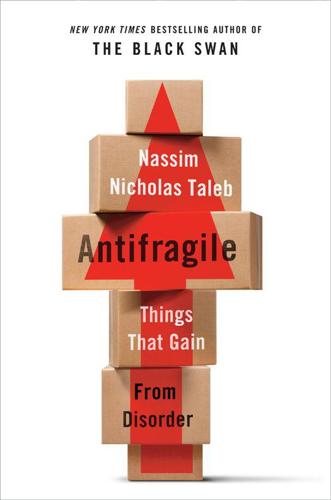
Antifragile: Things That Gain From Disorder
by
Nassim Nicholas Taleb
Published 27 Nov 2012
To see how redundancy is a nonpredictive, or rather a less predictive, mode of action, let us use the argument of Chapter 2: if you have extra cash in the bank (in addition to stockpiles of tradable goods such as cans of Spam and hummus and gold bars in the basement), you don’t need to know with precision which event will cause potential difficulties.1 It could be a war, a revolution, an earthquake, a recession, an epidemic, a terrorist attack, the secession of the state of New Jersey, anything—you do not need to predict much, unlike those who are in the opposite situation, namely, in debt. Those, because of their fragility, need to predict with more, a lot more, accuracy. Plus or Minus Bad Teeth You can control fragility a lot more than you think. So let us refine in three points: (i) Since detecting (anti)fragility—or, actually, smelling it, as Fat Tony will show us in the next few chapters—is easier, much easier, than prediction and understanding the dynamics of events, the entire mission reduces to the central principle of what to do to minimize harm (and maximize gain) from forecasting errors, that is, to have things that don’t fall apart, or even benefit, when we make a mistake.
…
(iii) As for the lemonade, it looks as if history is in the business of making it out of lemons; antifragility is necessarily how things move forward under the mother of all stressors, called time. Further, after the occurrence of an event, we need to switch the blame from the inability to see an event coming (say a tsunami, an Arabo-Semitic spring or similar riots, an earthquake, a war, or a financial crisis) to the failure to understand (anti)fragility, namely, “why did we build something so fragile to these types of events?” Not seeing a tsunami or an economic event coming is excusable; building something fragile to them is not. Also, as to the naive type of utopianism, that is, blindness to history, we cannot afford to rely on the rationalistic elimination of greed and other human defects that fragilize society.
…
No More Black Swans Meanwhile, over the past few years, the world has also gone the other way, upon the discovery of the Black Swan idea. Opportunists are now into predicting, predictioning, and predictionizing Black Swans with even more complicated models coming from chaos-complexity-catastrophe-fractal theory. Yet, again, the answer is simple: less is more; move the discourse to (anti)fragility. 1 From my experiences of the Lebanese war and a couple of storms with power outages in Westchester County, New York, I suggest stocking up on novels, as we tend to underestimate the boredom of these long hours waiting for the trouble to dissipate. And books, being robust, are immune to power outages. 2 A related idea is expressed in a (perhaps apocryphal) statement by the financier Warren Buffett that he tries to invest in businesses that are “so wonderful that an idiot can run them.
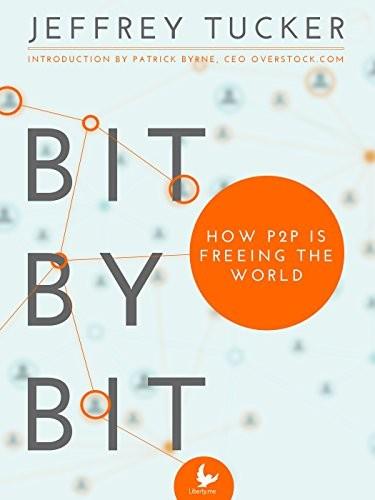
Bit by Bit: How P2P Is Freeing the World
by
Jeffrey Tucker
Published 7 Jan 2015
Hayek, Law, Legislation, and Liberty, volumes I, II, and III (University of Chicago Press, 1978, 1981). Ludwig von Mises, Nation, State, and Economy (Liberty Fund, 2005 [1919]). Samuel Paterson, Up and Running with Bitcoin (Liberty.me, 2014). Peter Surda, The Economics of Bitcoin (Master’s Thesis, University of Vienna). Nassim Taleb, Anti-Fragile: Things That Gain from Disorder (Random House, 2014). 90
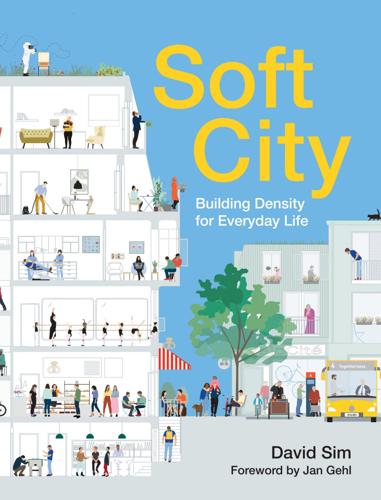
Soft City: Building Density for Everyday Life
by
David Sim
Published 19 Aug 2019
Manufactured in the United States of America 10 9 8 7 6 5 4 3 2 1 Keywords: Climate change, communal space, community, Copenhagen, courtyard, cycling, enclosure, Dense-Low, density, human scale, hygge, mobility, nature, neighbors, spatial diversity, transit, walkability What is the soft in soft city? Soft is something to do with responsiveness accommodating, absorbing, supple, pliable, excusing, tolerant, flexible, elastic, extendable, adaptable, changeable, anti-fragile Soft is something to do with ease simple, straight-forward, easy-going, effortless, smooth, intuitive, understandable Soft is something to do with comfort comfortable, snug, safe, protected, sheltered, peaceful, quiet, “hyggelig” Soft is something to do with sharing sociable, common, mutual, reciprocal, participatory, public Soft is something to do with plurality joined-up, hybrid, mixed-use, overlapping, multifunctional, interconnected Soft is something to do with simplicity low-tech, low-cost, low-key, modest Soft is something to do with smallness human scale, human dimension, individual control, fractal, self-determining Soft is something to do with appealing to the senses sensory, delightful, charming, seductive, intriguing Soft is something to do with calm peaceful, quiet, cool, low-key, serene, tranquil, mild Soft is something to do with trust sureness, clarity, certainty, confidence Soft is something to do with consideration gentle, compassionate, sympathetic, empathetic, caring, benign, kindly Soft is something to do with invitation welcoming, accessible, permeable, open Soft is something to do with ecology a light touch, natural, seasonal, low carbon footprint It’s about ease, comfort, and care in everyday life.

Radical Uncertainty: Decision-Making for an Unknowable Future
by
Mervyn King
and
John Kay
Published 5 Mar 2020
The earnings stability they, and many other businesses, reported was properly a cause for concern, not congratulation; greater variability would have demonstrated a sounder basis for these earnings. The world is inherently uncertain and to pretend otherwise is to create risk, not to minimise it. Taleb describes ‘anti-fragility’ – positioning oneself to benefit from radical uncertainty and the unknowable future. The value of an option is increased by volatility. The details of Thales of Miletus’s transaction with the olive presses remain obscure – if indeed any such transaction actually occurred. Perhaps he made a futures contract with the owners of the olive presses, perhaps he bought what we would now describe as a call option: the right, but not the obligation, to rent the presses at a price agreed in advance – a price which would seem low if the harvest was as good as Thales anticipated.
…
R., 92 Tolstoy, Leo, 222 ; War and Peace , 433 Tomasello, Michael, 274 Tom’s coffee house (City of London), 55 Tooby, John, 165 Toyota, 409 tram project in Edinburgh, 364–5 , 370 transport modelling, 363–5 , 370 , 371 , 372 , 396 , 404 , 407 Treverton, Greg, 20 , 22 Tribe, Laurence, 207 Trichet, Jean-Claude, 350 , 357 , 399 Truman, Harry, 45 , 292–3 Trump, Donald, 249 truth, scientific, 100 , 357 Tucker, Albert, 248–9 , 251 , 253 , 382 , 392 Tuckett, David, 227 , 229–30 Tversky, Amos, 121 , 135–6 , 144–7 , 149 , 215 , 393–4 Ukraine conflict, 99 uncertainty: ‘aleatory’ and ‘epistemic’, 23 ; and Bank of England ‘fan charts’, 103–5 ; bogus quantification, 85–6 , 423 ; and confidence, 86 , 87–9 , 403 ; creativity and imaginative thinking, 47 , 130 , 418–19 ; critiques of ‘American school’, 133–7 ; dictionary definition, 37 ; as different to risk, 12–14 , 15–16 , 17 , 74 , 305–6 , 355 , 420 ; and evolutionary rationality, 16–17 , 47 , 152–3 , 154–5 , 171–2 , 272 , 401 , 428–31 ; and ‘expert’ forecasters, 21–2 , 221–2 ; the ‘hedgehog’ and the ‘fox’, 222 , 398 , 412 ; hegemony of optimisation, 40–2 , 110–14 ; ‘I don’t know’ answer, 11–12 , 46 , 88–9 , 91–2 , 98 , 145 , 296 , 400 , 403 , 414 ; ill-defined problems, 97–8 , 99 ; ‘law of the excluded middle’, 98–9 ; and likelihood, 86–7 , 89–91 , 403 ; in medicine, 44–5 ; ‘Monte Carlo simulations’, 365 ; mysteries resolved by advances in knowledge, 32–3 ; ordinary usage of term, 421 ; problems of complexity and context, 149–53 ; and responsibility, 9 ; Rumsfeld’s musings on, 7–8 ; and secure reference narratives, 127 , 426–31 , 432 ; Taleb’s ‘anti-fragility’, 422 ; Taleb’s ‘black swans’, 14 , 38–40 , 42 ; ‘tame’ problems and ‘wicked’ problems, 22–6 , 43–4 ; technical meaning in economics, 12 , 421 ; unknown unknowns, 3–5 , 7–8 , 20 , 23–4 , 38–40 , 42 , 57 , 346 , 363 ; unsolvable mysteries, 33–4 , 44 ; vagueness and ambiguity, 97–100 ; von Neumann–Morgenstern axioms, 111 , 133 , 435–44 ; see also axiomatic rationality; probabilistic reasoning; reference narrative concept Union Pacific Railroad, 48 United Nations, 390 urban planning, 22 , 424–5 utilitarianism, 110–11 , 401 ; expected utility , 111–14 , 115–18 , 124–5 , 127 , 128–30 , 135 , 400 , 435–44 ; use of term ‘utility’ in economics, xiv , 436 Valdivia earthquake (Chile, 1960), 237–8 Value at risk models (VaR), 366–8 , 405 , 424 Vickrey, William, 256 Vietnam War, 99 , 135 , 167–8 , 281–2 , 295 , 298–300 , 330 , 412–13 Viniar, David, 6 , 9 , 58 , 68 , 109 , 150 , 176 , 202 , 235 , 366 Voltaire, 187 , 199 Wack, Pierre, 222–3 Waldfogel, Joel, 191 , 193 Walmart, 227 Walras, Leon, 343 Walton, Sam, 227 Wang Laboratories, 27 , 31 Wansell, Geoffrey, 198 Warren, Dr Robin, 284 water supply business, 182–3 Watergate scandal, 4 Waterloo, Battle of (1815), 188 Watson, James, 156 Watson, Thomas, 282 Watson Jr, Thomas, 27 Waze, 395–6 Webber, Melvin, 22 WebTAG, 363–4 , 365 , 371 , 404 , 407 Welles, Orson, 418–19 ‘What is going on here?’

Carbon: The Book of Life
by
Paul Hawken
Published 17 Mar 2025
Humanity does not realize that it is losing and eliminating Indigenous languages, how the languages reflect a unique and brilliant understanding of the world. As impacts from a warming atmosphere pummel neighborhoods, rivers, forests, people, and towns, we will need to know our homelands far better than we do now—the biome, where our water and food come from, how to create durability, foster anti-fragility, and deepen connections. The climate movement employs words and phrases that make little or no sense to the vast majority of humanity—net zero, decarbonization, direct air capture, enteric fermentation, carbon removal, teragram, tipping point, planetary boundaries, sequestration. The most outlandish term of all may be carbon neutrality, a biophysical impossibility.
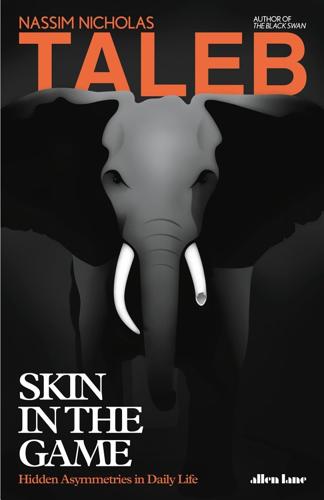
Skin in the Game: Hidden Asymmetries in Daily Life
by
Nassim Nicholas Taleb
Published 20 Feb 2018
THE BLACK SWAN (2007, 2010), on how high-impact but rare events dominate history, how we retrospectively give ourselves the illusion of understanding them thanks to narratives, how they are impossible to estimate scientifically, how this makes some areas—but not others—totally unpredictable and unforecastable, how confirmatory methods of knowledge don’t work, and how thanks to Black Swan–blind “faux experts” we are prone to building systems increasingly fragile to extreme events. THE BED OF PROCRUSTES (Philosophical Aphorisms) (2010, 2016) ANTIFRAGILE (2012), on how some things like disorder (hence volatility, time, chaos, variability, and stressors) while others don’t, how we can classify things along the lines fragile-robust-antifragile, how we can identify (anti)fragility based on nonlinear response without having to know much about the history of the process (which solves most of the Black Swan problem), and why you are alive if and only if you love (some) volatility. SKIN IN THE GAME (2018), this volume. INCERTO’S TECHNICAL COMPANION, consisting of academic-style papers, miscellaneous notes, and (very) technical remarks and developments.
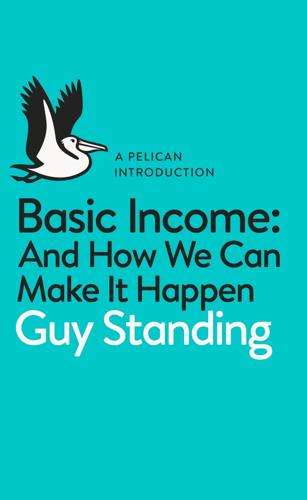
A Pelican Introduction: Basic Income
by
Guy Standing
Published 3 May 2017
A study of children in Cherokee tribal families who received regular payments from the reservation’s casino earnings found that parents argued less (mainly because they were less likely to argue over money) while children suffered less from anxiety and behavioural disorders, did better at school and were less likely to drift into crime.20 A basic income would also strengthen personal resilience. Nassim Taleb has developed the idea of ‘anti-fragility’ in relation to coping with the shock of rare events, which he calls ‘black swans’.21 In his view, it is a mistake to try too hard to avoid shocks; an efficient economic system requires moderate volatility and disruption (perhaps coming from technological change) coupled with mechanisms that prepare people to deal with shocks.
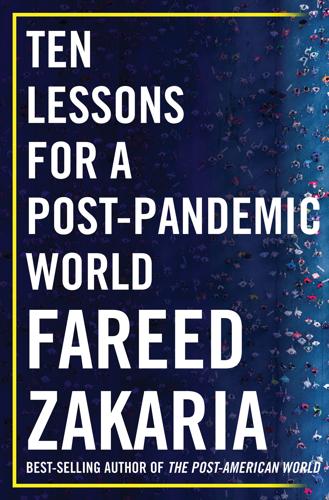
Ten Lessons for a Post-Pandemic World
by
Fareed Zakaria
Published 5 Oct 2020
To address it seriously we would need to start by enacting a carbon tax, which would send the market the right price signal and raise the revenue needed to fund new technologies and simultaneously adapt to the already altered planet. As for economic development, there are hundreds of ways we could approach the process differently, retaining traditional ingredients like growth, openness, and innovation while putting new emphasis on others like security, resilience, and anti-fragility. We can make different trade-offs, forgo some efficiencies and dynamism in some areas, and spend more money to make our societies prepared. The costs of prevention and preparation are minuscule compared to the economic losses caused by an ineffective response to a crisis. More fundamentally, building in resilience creates stability of the most important kind, emotional stability.

Green Swans: The Coming Boom in Regenerative Capitalism
by
John Elkington
Published 6 Apr 2020
Characteristics •Often degenerative •Unplanned (with some exceptions) •Exponential •Largely unforeseen •Vicious cycles, mainly •Undermine resilience, promote fragility •Rob future generations •Increasingly unsustainable •Regenerative •Planned (with some exceptions) •Exponential •Foreseen, to some degree •Virtuous cycles, mainly •Build resilience, promote “anti-fragility”6 •Reward future generations •Increasingly sustainable 2. Impacts •Often drive breakdowns •Produce net negative impacts across TBL •Corrode social capital, via intensifying cycles of blame and shame •Counterintuitively, can trigger positive unintended consequences, including Green Swan solutions •Spur breakthroughs •Produce net positive impacts across TBL •Generally require robust social capital to achieve—and also help build it •Counterintuitively, can trigger negative unintended consequences, tomorrow’s Gray or Black Swans 3.

The Corruption of Capitalism: Why Rentiers Thrive and Work Does Not Pay
by
Guy Standing
Published 13 Jul 2016
Rogoff, This Time is Different: Eight Centuries of Financial Folly (Princeton: Princeton University Press, 2011). 36 See, for instance, S. Mullainathan and E. Shafir, Scarcity: Why having too little means so much (London: Allen Lane, 2013). For a general treatment of resilience, see N. N. Taleb, Anti-Fragile: How to live in a world we don’t understand (London: Allen Lane, 2012). Chapter 5 PLUNDER OF THE COMMONS ‘Inclosure came and trampled on the grave Of labour’s rights and left the poor a slave’ John Clare, The Mores, c.1815 ‘Property is theft,’ thundered Proudhon. We may dispute that endlessly.
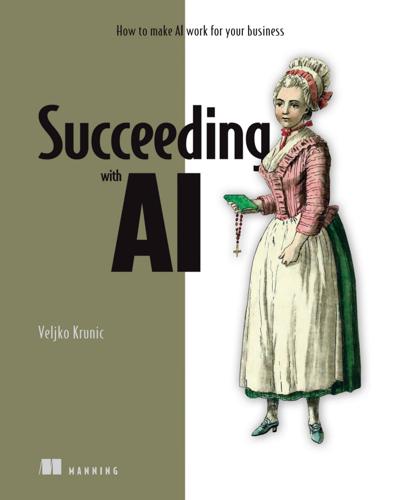
Succeeding With AI: How to Make AI Work for Your Business
by
Veljko Krunic
Published 29 Mar 2020
Available from: https://safeblog.org/2016/ 01/14/automation-dependency-children-of-the-magenta/ Derczynski L. Complementarity, F-score, and NLP evaluation. Proceedings of the Tenth International Conference on Language Resources and Evaluation (LREC’16), Portorož, Slovenia. 2016:261–266. Taleb NN, Douady R. Mathematical definition, mapping, and detection of (anti)fragility. arXiv. 2012 Aug;arXiv:1208.1189 [q-fin.RM]. Taleb NN, Canetti E, Kinda T, Loukoianova E, Schmieder C. A new heuristic measure of fragility and tail risks: Application to stress testing. IMF Working Papers. 2012 Aug;12. Taleb NN. The black swan: the impact of the highly improbable. 2nd ed. New York: Random House Trade Paperbacks; 2010.
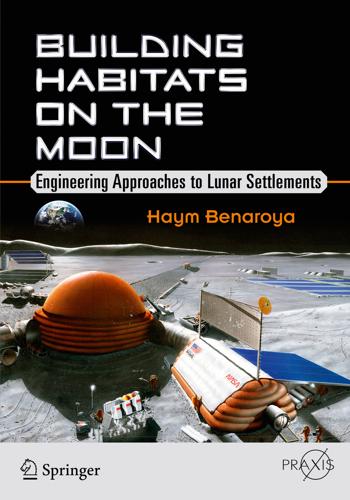
Building Habitats on the Moon: Engineering Approaches to Lunar Settlements
by
Haym Benaroya
Published 12 Jan 2018
Downer: Anatomy of a Disaster: Why Some Accidents are Unavoidable, Centre for Analysis of Risk and Regulation at the London School of Economics and Political Science, March 2010. 5. There are many lessons to learn from this accident review: The Nimrod Review: An independent review into the broader issues surrounding the loss of the RAF Nimrod MR2 Aircraft XV230 in Afghanistan in 2006, C. Haddon-Cave, October 28, 2009. 6. Anti-Fragile: Things That Gain From Disorder, N.N. Taleb, Random House, 2012, 2016; See also: The Black Swan - The Impact of the Highly Improbable, N.N. Taleb, Random House 2007, 2016. 7. J. Downer: The Aviation Paradox: Why We Can ‘Know’ Jetliners But Not Reactors, Minerva (2017) 55, pp.229–248. Footnotes 1A heuristic (adjective) pertains to the process of gaining knowledge, enabling a person to discover or learn something